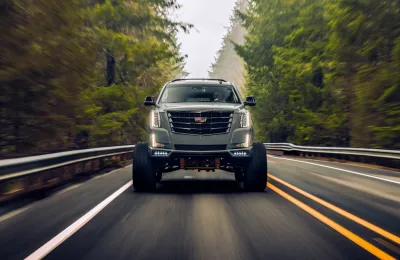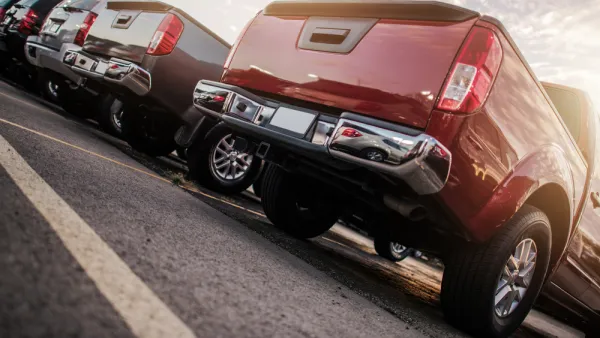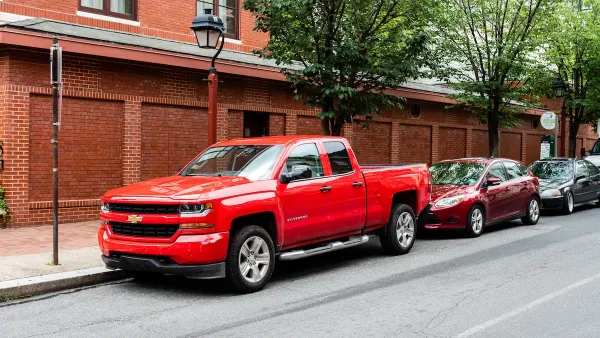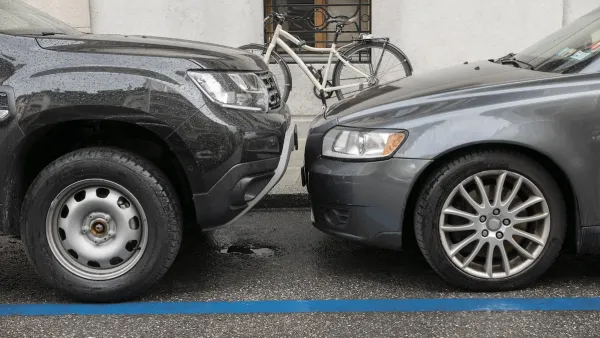Even with the growth of electric vehicles, experts say the trend toward larger, heavier vehicles is inherently incompatible with environmental goals.

Based on the amount of emissions they produced last year, the world’s SUVs are, collectively, the sixth largest emitter of carbon dioxide. Writing in The New Yorker, Elizabeth Kolbert points out that the average SUV releases 20 percent more carbon per mile driven than a medium-sized car.
“The move toward bigger and heavier vehicles, it seems pretty obvious, is incompatible with the goal of reducing global emissions.” So “Why is it that the world is moving toward heavier cars at a time when it should be doing precisely the reverse?”
One major reason, Kolbert writes, is the high price of SUVs, which are up to 51 percent more expensive than smaller cars, despite similar production costs. U.S. carmakers can also evade fuel efficiency standards by classifying vehicles as trucks. “Unfortunately, the electrical-vehicle tax credits approved last year as part of the Inflation Reduction Act give S.U.V.s similarly favorable treatment.”
In addition to carbon emissions, bigger vehicles also create more particulate pollution from tires and pose a higher risk to pedestrians. Experts suggest charging higher registration rates for heavier vehicles—a policy being considered in California—could discourage the proliferation of massive trucks and SUVs.
As Kolbert points out, replacing gas-powered cars with electric ones will only be a stopgap that reduces carbon emissions but creates other serious impacts on the environment and public safety. “Better still would be to ditch cars altogether.”
FULL STORY: Why S.U.V.s Are Still a Huge Environmental Problem

National Parks Layoffs Will Cause Communities to Lose Billions
Thousands of essential park workers were laid off this week, just before the busy spring break season.

Retro-silient?: America’s First “Eco-burb,” The Woodlands Turns 50
A master-planned community north of Houston offers lessons on green infrastructure and resilient design, but falls short of its founder’s lofty affordability and walkability goals.

Delivering for America Plan Will Downgrade Mail Service in at Least 49.5 Percent of Zip Codes
Republican and Democrat lawmakers criticize the plan for its disproportionate negative impact on rural communities.

Test News Post 1
This is a summary

Test News Headline 46
Test for the image on the front page.

Balancing Bombs and Butterflies: How the National Guard Protects a Rare Species
The National Guard at Fort Indiantown Gap uses GIS technology and land management strategies to balance military training with conservation efforts, ensuring the survival of the rare eastern regal fritillary butterfly.
Urban Design for Planners 1: Software Tools
This six-course series explores essential urban design concepts using open source software and equips planners with the tools they need to participate fully in the urban design process.
Planning for Universal Design
Learn the tools for implementing Universal Design in planning regulations.
EMC Planning Group, Inc.
Planetizen
Planetizen
Mpact (formerly Rail~Volution)
Great Falls Development Authority, Inc.
HUDs Office of Policy Development and Research
NYU Wagner Graduate School of Public Service





























